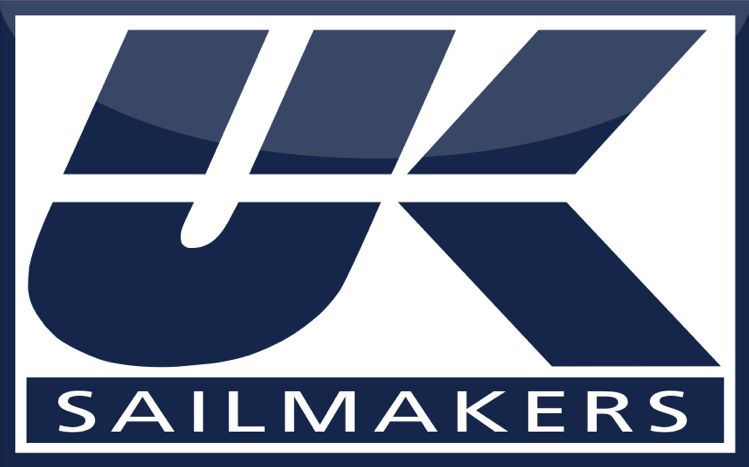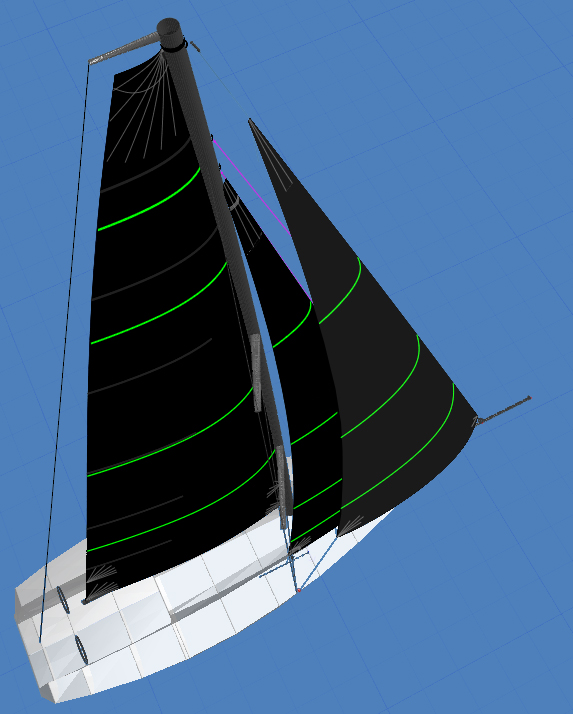UK Sail Design
UK Sailmakers uses powerful computer modeling and analysis programs to design race-winning sails that will hold up to the strains and stresses of the race course. Modern CAD programs allow sail designers to rely more on proven numbers than on old fashion intuition. Our designers have the ability to model a sail’s shape and test its performance characteristics on a computer screen, rather than going through time-consuming and expensive process of building two full size sails, each one a little different to test developmental ideas.
UK Sailmakers designers use leading edge sail design programs like BSG's Sail Pack, SMAR Azure's Azure Project, Sail Science's Sailmaker and UK Sailmakers' proprietary AccuCut design program. All create virtual 3-D molds that can be digitally sliced in to two-dimensional panels that when joined back together re-create a full size version of the designed mold. Below Left is the 3D rendering of a Santa Cruz 50 Light No. 1 design. Below Right is that sail flying on the boat. Notice how they are virtual duplicates.
Left is the 3D rendering on a Light No. 1 genoa for a Santa Cruz 50. Right is the same sail flying on the boat. The draft stripes are virtually identical.
Modern design programs create a 3D model of your boat that is used to make sure a designed sail is perfectly matched to your boat and rig. Designers can see how the sail fits around the spreaders and shrouds as well as make sure the clew height and sheeting angle are right. He can also analyze how a main and genoa work together to make sure the boat stays balanced. What we are looking for is a sail plan and sail shapes that put the maximum driving force in precisely the right place to produce a perfectly balanced boat – and with the least amount of drag.
Into this equation goes the hull, the keel, the rudder and the sails. Added together, this is called "the lead." After all, if we design a main with extra roach that produces 1% more power, but at the cost of 3% more weather helm, the boat won't be faster. The main, jib, keel and rudder all need to perform in concert. That is why we never design a main on its own; we are always looking at the overall picture of the boat.
For high end programs or custom boats in a hurry to move up the performance ladder, our design team has the ability to buy time on BSG's super computer running their Fluid Structural Interaction (FSI) calculations to test proposed sail designs and cloth choices to make sure they are not built too strong (too heavy) or too weak (too light) for their expected loads. The FSI calculations will predict whether a design and construction will keep its shape properly as the rig bends, halyards are tightened and sheets are trimmed. The results are displayed in the 3D view showing: flying shape, pressure distribution, loads, strains (values and main orientations), wrinkles, etc... BSG also gives the option of integrating the hull designs and yacht's VPPs to determine what sail shapes produce the best performance. If you are a grand prix sailor, talk to your local UK loft about the tools he has to produce fast sails from the get go.
UK Sailmakers designers work in conjunction with the group's head designer Pat Considine of UK Sailmakers Chicago. Pat has years of experience sailing everything from IOR 50-footers and One-Tonners to Farr 40s, Santa Cruz 70s and TP52s.



